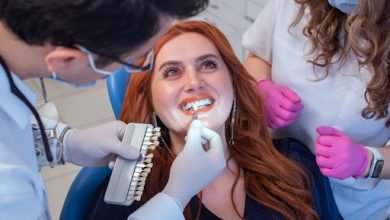Modern Options for Treating Dental Realignment; Braces in Old Windsor
When you are told you need braces after a check-up, you may be filled with a sense of dread; images of large, metal braces flash through your mind and before you have left the dental surgery, you have decided to not undertake the procedure.
While a very common treatment for misalignment in dentistry, many patients have refused to undergo this orthodontic procedure, solely because of the appearance of the appliance.
Luckily, aside from the traditional, metal aligners, dentistry has advanced, leading to the development of more discreet options to correct issues with moderately misaligned or crooked teeth.
Removable Aligners
As the name suggests, these aligners are removable; don’t be fooled however, they are extremely powerful and have a high rate of success when correcting alignments.
An added benefit of this type of removable orthodontic device is that you do not have to worry about issues with oral hygiene, it can be removed before you brush your teeth and put back in afterwards.
These aligners are also clear. They resemble a clear, plastic tray, moulded to fit over your teeth, minimising their appearance and boosting your confidence while wearing them.
There are many brands of clear aligner, with the most popular being invisalign. The added benefit of Invisalign treatment is that your dentist will use computer 3D modelling to scan your teeth at the start of the treatment and to accurately predict how your teeth will move to obtain that straight smile you want, so there are no nasty surprises.
Fixed Aligners
A more common way to treat alignment issues is with the use of a fixed aligner. Although called ‘fixed aligners,’ these can be both removable or fixed and often, the removable version is preferred. It is worth noting that in this segment, when discussing fixed aligners, we are not talking about traditional ‘train track’ aligners.
More commonly used on children and adolescents whose teeth are still forming, these are used to treat bite issues, such as over or under bite, when the teeth on one of the jaws protrudes in front of the other.
Appearance of these aligners may vary, some are completely clear and are extremely discreet. Others may have some visible metal components and commonly, some varieties have a single metal bar that is designed to fit over the front of the teeth.
The most commonly used aligner in this category is called a ‘twin block’ retainer, which is often used on children before they have more complex orthodontic work performed. Using a screw mechanism, the lower jaw is eased forwards to correct issues with alignment of the jaws and bite. This can even be used to expand the upper jaw, to widen the upper arch or roof of the mouth.
When discussing orthodontic treatment with your dentist, remember that these types of aligners can only benefit patients who have mild or moderate misalignment issues.
Contact your dentist today for more information on modern treatments for dental realignment.




